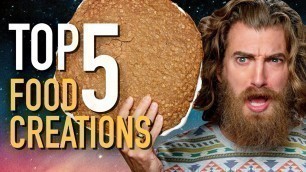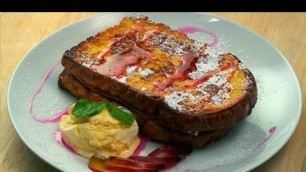

'Join my Email List: https://www.thomasdelauer.com I Recommend Magic Spoon Cereal: http://www.magicspoon.com/thomasdelauer Code: THOMASDELAUER Gets You Free Shipping This video does contain a paid partnership with a brand that helps to support this channel. It is because of brands like this that we are able to provide the content that we do for free. The best way that you can directly support my channel, is by supporting the brands that help make this all possible. Any product that you see on my channel is a product that I also use personally, regardless of any paid promotion. Get my Free Newsletter and Downloadable Cheatsheets (eating out, travel, etc): https://www.thomasdelauer.com/life-optimization-tactics/ Follow More of My Daily Life on Instagram: http://www.Instagram.com/ThomasDeLauer It\'s important that I am honest and to say that this video does have a sponsorship from Magic Spoon, supporting them is a good way to support my channel! Why We Get SO HOOKED on JUNK Food - Psychology and Physiology- Thomas DeLauer In reality, you are not fighting the food. You are fighting a team of very smart people with PhDs in food science. They know everything about human taste receptors, how our brain processes taste, which texture is the most appealing. Food companies organize surveys about the ideal colour of food. What level of detail do they aspire? Well, it was found that different nations perceive food colours differently, so food companies started to produce the same food in different colours to target a given nation most effectively. What Creates Craving Here are some characteristics of foods which are just created to be as palatable as possible. Dynamic contrast Foods scientists know that people prefer food with sensory contrast. These are food with an edible harder crunchy shell and something soft and creamy inside. Such contrasts trigger endorphin release and produce a thrilling feeling of novelty. Salivary Response Some foods are designed to melt right in your mouth. Such food mixes well with saliva and covers most area of your tongue. The result is more of your taste buds covered with the deliciousness. Dressings are popular due to this, they help to produce more saliva, the food gets more emulsified and can cover more of your taste buds. Therefore, dressing triggers a stronger sensory response. Vanishing caloric density This effect is also connected with the melting. The problem is that our brain evolved to sense the amount of food we eat by chewing. If we eat something creamy and melting, chewing is bypassed, our brain has fewer inputs about ingesting food and we eat more. The brain simply gets fooled by melting food and doesn\'t tell us to stop. Sensory specific response Our brain likes variability and it can get easily tired when one taste or smell is predominant in our food. The sensitivity of that specific receptor decreases over time – that\'s why terrible smell is so terrible only at the beginning but vanishes over time. The smell is actually still the same but we do not smell it anymore. Food scientists learned to go around by producing food with a variety of smell but with none of them being dominant. Calorie density Here, food scientists try to trick your brain to think that it is getting some energy but not so much to send the \"fulness stop\" signal. Sensing the energy at first will make you crave the food but with a precisely designed mixture of fats, carbs and protein, food scientists can significantly prolong the time before your brain says \"Stop!\" The high glycaemic index (GI) Our brain prefers food with high GI because it causes a spike in insulin which is able to form a potent food memory. The brain wants to remember junk funk with high GI because in the short term it offers greater survival value. The big junk food trio Salt, sugar, fat – these are ingredients are the major artillery of the food industry as they are the most potent stimulators of the brain A similar pattern of compensation is seen in obese people as shown in research published in PLOS One. In simple terms, obese people have to eat more to get the same feel-good response as lean people. Completely the same behaviour as observed in drugs addicts who need a higher dosage of their drug. The similarity between drug and food addiction is observable even in healthy adults. Naltrexone is an anti-craving drug usually used for the treatment of alcoholic or opioid addictions. In a study published in Neuroscience and Biobehavioural Reviews, Naltrexone was able to significantly reduce food intake and reduce the subjective liking of food, especially highly palatable food. References https://pdfs.semanticscholar.org/96ac/e087b96346e36a96bde88249110078e11622.pdf https://pubmed.ncbi.nlm.nih.gov/25000285/ https://www.thelancet.com/journals/lancet/article/PIIS0140673600036436/fulltext https://pubmed.ncbi.nlm.nih.gov/12479844/ https://pubmed.ncbi.nlm.nih.gov/24763910/ https://pubmed.ncbi.nlm.nih.gov/20382236/'
Tags: Weight loss , fat loss , intermittent fasting , food addiction , Thomas DeLauer , Junk Food , binge eating , food cravings , how to stop food cravings , how to stop cravings , junk food cravings , why is junk food bad for you , craving junk food , why do we eat junk food , why is junk food addicting , why do we crave junk food , why is junk food bad , junk food cravings explained , why do we get cravings , craving science , cravings explained , food addiction help
See also:

















comments